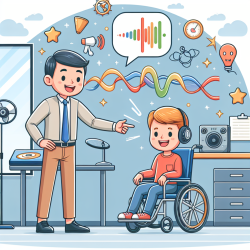Introduction
The relationship between infectious diseases and mental disorders has been a subject of increasing interest in recent years. A recent study titled "Association of Tic Disorders and Enterovirus Infection" provides valuable insights into this connection, particularly focusing on the association between enterovirus (EV) infections and tic disorders. This blog aims to help practitioners improve their skills by understanding the outcomes of this research and encouraging further exploration into this area.
Understanding the Study
The study conducted by Tsai et al. (2016) utilized data from Taiwan's National Health Insurance Research Database to explore the association between EV infections and the incidence of tic disorders. The study involved a large sample size of 47,998 individuals with a history of EV infection, compared to an equal number of matched controls. The findings revealed a significant association between EV infections and a higher incidence of tic disorders, with a hazard ratio of 1.24.
Key Findings
- EV infection was associated with a greater incidence of tic disorders.
- The latency period between initial EV infection and tic disorder diagnosis averaged 5.4 years.
- EV infections without central nervous system (CNS) involvement were significantly associated with tic disorders, whereas those with CNS involvement were not.
- Hospitalization for EV infection did not increase the risk for tic disorders.
Implications for Practitioners
For practitioners, these findings underscore the importance of monitoring children with a history of EV infections for symptoms indicative of tic disorders. Early identification and intervention can potentially mitigate the impact of tic disorders on a child's development and quality of life. Practitioners should consider incorporating surveillance strategies for tic symptoms in their practice, particularly for children who have experienced EV infections.
Encouraging Further Research
While this study provides significant insights, it also highlights the need for further research to understand the mechanisms underlying the association between EV infections and tic disorders. Future studies could explore the role of immune-inflammatory responses and their influence on brain development in the context of tic disorders. Additionally, investigating other potential confounding factors, such as genetic predispositions and environmental influences, could provide a more comprehensive understanding of this association.
Conclusion
The association between EV infections and tic disorders presents a critical area for further exploration. Practitioners are encouraged to remain vigilant in monitoring children with a history of EV infections and to consider the potential implications of these findings in their practice. By integrating data-driven insights into clinical practice, practitioners can enhance outcomes for children and contribute to the growing body of knowledge in this field.
To read the original research paper, please follow this link: Association of Tic Disorders and Enterovirus Infection.










